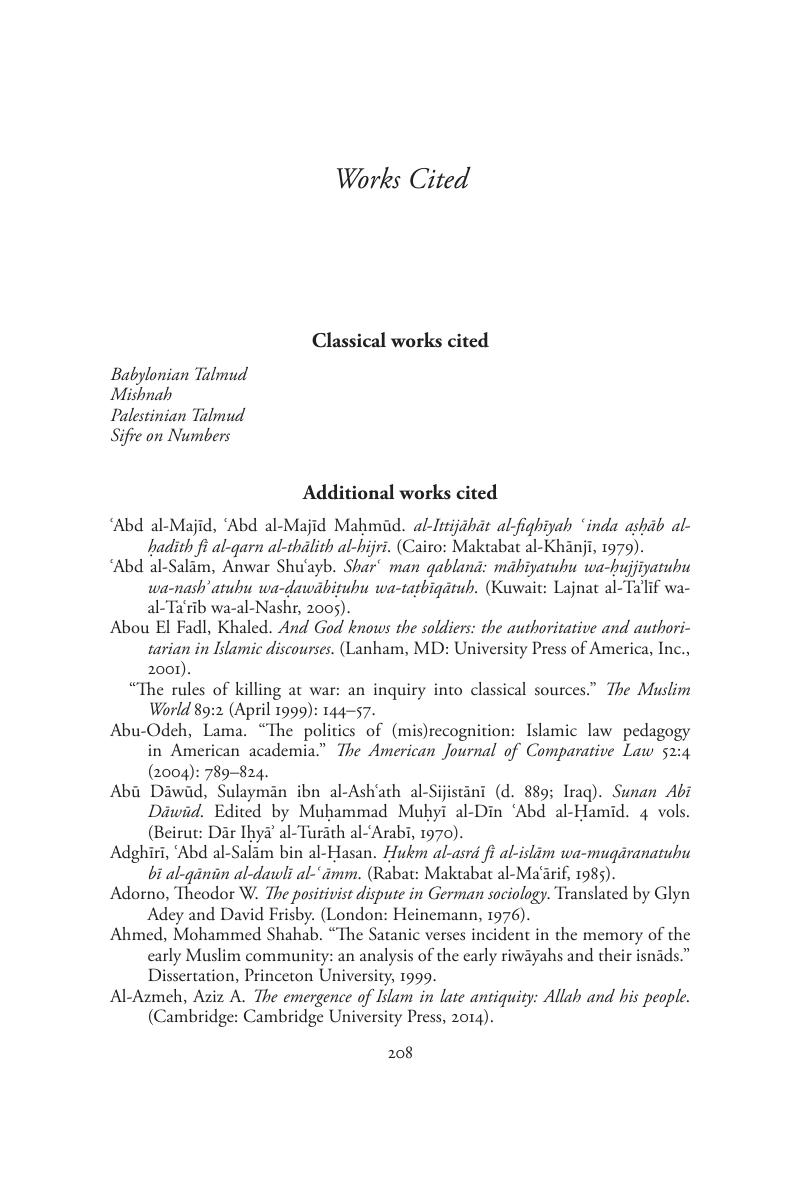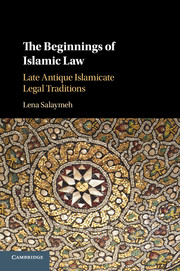Book contents
- The Beginnings of Islamic Law
- The Beginnings of Islamic Law
- Copyright page
- Dedication
- Contents
- Book part
- Note on the text
- Introduction: Genealogies of Islamic Law
- Chapter 1 Legal-historical Beginnings – Outlining Late Antique Islamic Law
- Chapter 2 Legal Historiography – a Case Study in International Law
- Chapter 3 Legal-historical Hybridity – Tracing Islam in its Islamicate Context
- Chapter 4 Legal Custom – a Case Study in Ritual Law
- Chapter 5 Legal Historicizing: Moments in Macro-histories
- Chapter 6 Legal Comparisons – a Case Study in Family Law
- Conclusion
- Works Cited
- Index
- References
Works Cited
Published online by Cambridge University Press: 01 December 2016
- The Beginnings of Islamic Law
- The Beginnings of Islamic Law
- Copyright page
- Dedication
- Contents
- Book part
- Note on the text
- Introduction: Genealogies of Islamic Law
- Chapter 1 Legal-historical Beginnings – Outlining Late Antique Islamic Law
- Chapter 2 Legal Historiography – a Case Study in International Law
- Chapter 3 Legal-historical Hybridity – Tracing Islam in its Islamicate Context
- Chapter 4 Legal Custom – a Case Study in Ritual Law
- Chapter 5 Legal Historicizing: Moments in Macro-histories
- Chapter 6 Legal Comparisons – a Case Study in Family Law
- Conclusion
- Works Cited
- Index
- References
Summary

- Type
- Chapter
- Information
- The Beginnings of Islamic LawLate Antique Islamicate Legal Traditions, pp. 208 - 234Publisher: Cambridge University PressPrint publication year: 2016



